Xunantunich “Stone Maiden” Ruins, Cayo District, Belize
According to legend Xunantunich (pronounced “junantunish”) got named when a hunter went by himself in 1892 to hunt by the ruins along the Mopan river. The ruins were known by the locals for millennium by the locals and people would often prayer in front of a makeshift cross at the main temple known as “El Castillo” (the castle). It was while hunting at this site that the hunter claims to have seen a mysterious woman dressed all in white. It was kind of strange to see this lady by herself but the lady beckoned him to follow him and so he did. According to the story as she slowly ascended the stone stairway she turned and the hunter could see that she had fire-red glowing eyes. She also disappeared straight into a stone wall. This caused the hunter to freak out and he ran back into town. When the hunter got back into town everyone started asking him what had happened to his gun, which he had forgotten back when he had panicked. He told them his story and everyone went to the site to look for this mysterious woman. The gun was found by the cross where everyone had always prayed but despite a looking all around the site the “stone maiden” was never found, but the name Xunantunich stuck and now that is the name of the site.
In the mid 1890s the first modern explorations of the site were done by a man named Thomas Gann. He was at the time the district surgeon of Cayo and had chosen to settle in the area due to his interest in what he called “the unknown wonders of the indigenous people.”* The first survey of the area was done later by his successor Sir J. Eric Thompson. The majority of the excavation of the site happened between 1959 and 1960 during the Cambridge Expedition to what was then the British Honduras (Belize’s colony name).
Archeological evidence says that there has been a human presence at the site as early as 3000 BC. Looking at the number of ceramics and rate of growth, the height of Xunantunich’s growth happened somewhere between 300BC and 400 AD. In about 600 AD there was another apparent boom period but evidence also shows that Xunantunich may have fallen under control of another local Mayan site known as Naranjo. In 750 AD the site was suddenly and completely abandoned. No one knows why but architectural evidence does show evidence of what could have been earthquake damage to “El Castillo” (the main temple).
Today Xunantunich is one of the easiest of Belize’s archeological sites to get to being that it is only a mile off the western highway. The site is only 1 KM (about .6 miles) away from the Guatemalan border. When you climb to the top of “El Castillo” you can see down into Guatemala. To get to the site you have to cross the Mopan river. To do so you drive your car on a little hand cranked ferry which takes you safely across the river. The entire drive was paved, which was a first on our travels in Belize. Due to the ease of access we got there very early and we had the place virtuously to ourselves. By the time we left at 10 AM we saw bus loads of cruise people coming in (you can always tell who they are because of the lanyards they wear). When we went it was late September and it was drizzling. This along with the ever small stairs, made for a very slippery climb. We slipped a few times while climbing the slippery plastered steps. Luckily, we did not fall off the temple, because the drop offs were quite steep, but it was definitely not a guaranteed thing!
A brief video:
Click the plus sign to expand the pictures:
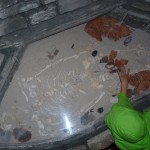
This royal grave was found at the site of A4. Mayan royals were often buried under temples, while regular people were buried under their homes.
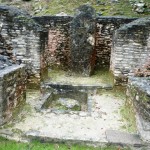
This room was used for spiritual cleansing. The petitioner would start a fire in the pit, pray to the stella, and then bathe in the ashes.
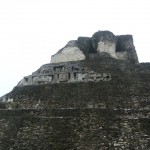
This side view of El Castillo kind of reminded me of the old Matterhorn at Disneyland (remember the Sky Ride?).

We were struggling to climb El Castillo and then I hear “hello papi” and saw that AJ had followed us up.
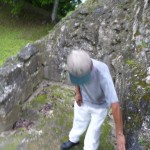
This was our “guide” he wasn’t officially a guide but as a local he certainly knew a lot more than the official guides did.
*Thompson, J. E. “Thomas Gann in the Maya Ruins.” British Medical Journal 2.5973 (1975): 741-43. Print.

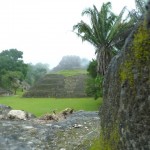

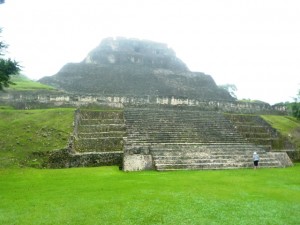
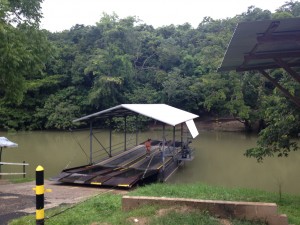
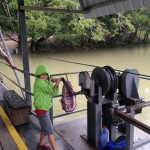
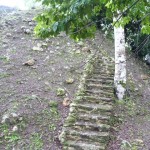
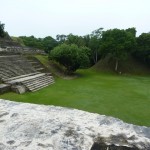
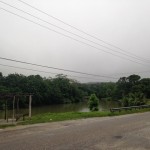
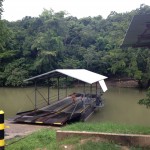
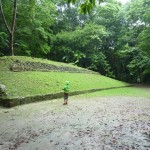
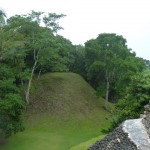
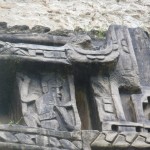
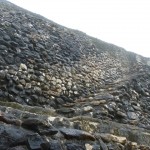
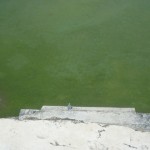

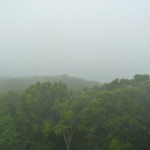
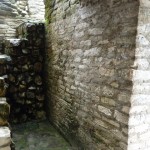
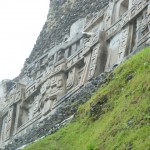
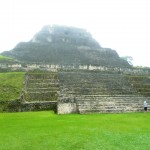

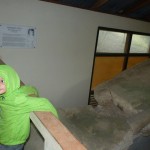

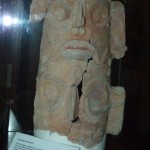

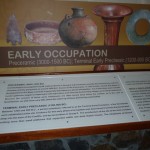
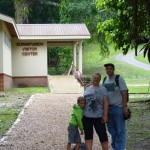
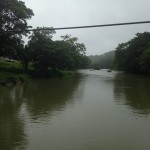
I was intrigued by the steepness of the stairs–didn’t the Mayans worry about people falling? It’s interesting how similar all of the Mayan sites are, including the suddenly desertion at some point of a large and beautiful city.
Every Mayan I have seen has really small feet and my guess is they were really good climbers.
It seems unbelievably well-preserved, especially that row friezes (pic. 21). Do you think the Stone Maiden has had just a bit of plastic (or rock) surgery?
Actually the friezes have had a bit of work done to them. They have a thin layer of plaster on them to protect them from the elements, but according to the workers at the site it doesn’t affect the original content underneath the plaster.